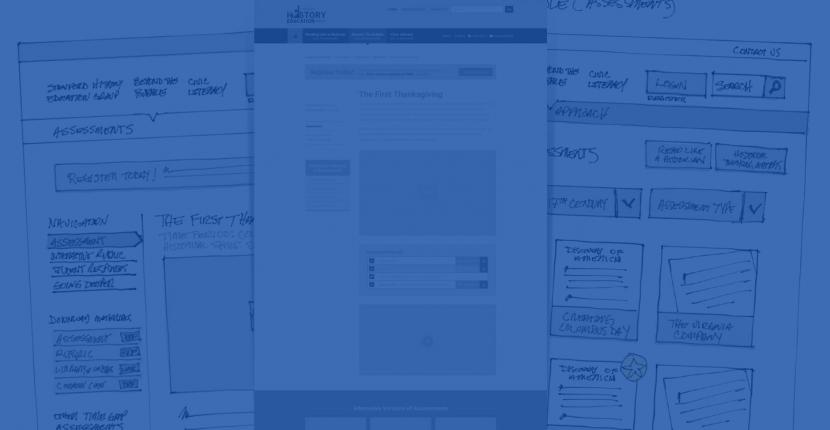I’m all about creating more jobs, though certainly not when jobs are created to maintain unnecessary inefficiency in an organization. Yet this is exactly what many companies are doing with their technology choices, and it’s costing them big. In this post, we’ll be exploring the costs specific to web technology in three areas: expertise, and market agility, usability and engagement rates. There isn’t a way to write a blog post on this subject that isn’t over-simplified or ridiculously long, but this should make a solid case for consolidation of technologies.
The larger the company, the more likely there are multiple web technologies being used to operate the overall web presence that users experience when they are online. There are so many reasons why websites get this way, all the way from M&A activity to personal preference. Because companies arrive at their complex outlay of technology gradually, they often haven’t stopped to count the costs of continuing like they ‘always have’. And let’s face it, it’s a painful process to migrate and consolidate technologies. On the human side, you have people who don’t want to change their daily processes, or too busy to feel they have margin to make the transition, and you have technologists whose job security and daily work depends on a limited number of software packages. On the technology side, you have the cost of migration for hours spent migrating and potential for lost data along the way.
Cost of Expertise and Licensing
In terms of expertise and licensing, you can think about it in two ways: the amount it would cost to employ a technology expert for each software choice, or the amount it would cost to retain multiple agencies. I do not believe the per-technology expense to be greatly different either way you go, depending on the actual needs. With an agency, you get a broader team of experts to work on your software. In addition, there are licensing fees and/or hosting fees that are technology specific and often add nearly incrementally to the overall cost.
The cost that isn’t covered here would be the (likely astronomical) cost to attempt to try to integrate these technologies’ databases. The cost to integrate the customer facing UI is discussed more under usability.
| Technology | Expert Cost | Licensing | Notes |
|---|---|---|---|
| Wordpress | $40k-$80k/year | Open-source - licensing is more on a per-functionality basis; hosting is a cost in consideration here | Working with an agency can drastically reduce costs |
| Drupal | $65k-$120k/year | Open-source - most modules free - hosting is a cost in consideration here | Drupal is more complex and scalable, so the cost of customization is higher; agency cost is likely equivalent to in-house expert costs |
| Magento | $70k-$150k | Open-source - licensing is more on a per-functionality basis; hosting is a cost in consideration here | The demand for experts drives up costs; the complex software requires greater expertise; you can find cheap agency with notable issues with delivery |
| Custom ASP.net | $70k-$150k | Custom programming - cost is in hosting | This technology choice is very inefficient as there is cost with every change to the website - companies that use this typically wish they didn’t |
| Sitecore | $70k-$150k | SaaS-based CMS - does not publish their fees - expect to pay over $60k/year in licensing at the lower end of enterprise | SaaS offering are attractive for companies wanting less risk exposure to their code base, and sacrifice flexibility and agility to get it. |
Cost of Agility
Brand and content management, which includes product catalog data management for ecommerce companies is a big areas of cost to agility. Multiple systems require more attention to make sure the brand message stays cohesive, or means the brand message becomes disparate and confused. There are many technologies out there that attempt to help with this, from PIMs for e-commerce catalogs to Percolate-style marketing managers. They have specific use-cases that don’t undermine the perks of consolidating your website platforms.
Another cost to agility in using multiple technologies is the cost to gathering and understanding the data coming in via each system. This all falls neatly under a category call ‘business intelligence’ (BI). Whether we are talking about things the data tell us about how our customers are using the site, or how culture and customer wishes are changing, there is a major cost to agility in having multiple technologies and multiple teams managing the website empire of our companies. This is a hidden cost that is not an assessable line-item in a budget, since it is our ability to stay relevant and ultimately the cost is to our revenue and customer base.
The final piece to mention as an extension to lack of insight is that there is a growing attention deficit for end users on the web. Multiple technologies create an unnecessary cost in time to iterating the site quickly once a direction chosen or changed.
Impact to Usability and Engagement Rates
Usability and conversion/engagement rates are directly hurt when trying to combine the customer-facing experience of different web platforms. Because a true integration of the user interface is cost-prohibitive to create, let alone to maintain, websites that are run with multiple technologies use linking to try to combine the experience.
One of the projects that a top-of-the-line Magento agency was on when I first started into my journey into the world of website consulting was Mango Languages, who were at the time attempting to ‘seamlessly’ integrate Magento with Wordpress so that the content pages had a true product experience embedded into them. Looking back, it was a fool’s errand, and the outcome is clear in the fact that the website now uses neither Magento or Wordpress! The budget ran over and the timeline was like a broken record (or a GIF file for you millennials).

With the experience I have now, it’s humorous for me to think of how easy that would have been using Drupal + Drupal Commerce, and it would not have been cumbersome to maintain either.
A clear example of the problem of using linking to combine an experience is with Equal Exchange’s website, a quality coffee company with a heart. You can see they also have very good taste in design and the quality of the user interface is high. Their main content site is on Drupal, and their e-commerce ‘Shop’ is on Magento. The way over to the Magento site is by clicking the ‘Shop’ button at the top right, or following multiple links that have been hard-coded into the rest of their experience. If you are on the Drupal site, the top left logo brings you back to the Drupal home page.

In the Magento site, the logo in the top left brings you to the Magento site. If a user wants to go back because of a mis-click, a change of mind, or a desire for a truly integrated shopping experience, they are relegated to the ‘back’ button or changing the URL. Headers and footers on both of these websites are not a shared experience at all.
http://shop.equalexchange.coop/

Equal Exchange is a simple example of how a great company can run into increased burden on all fronts when juggling multiple technologies. Even if a company deliberately wants two different user experiences, the use of two or more technologies to do the websites costs them on all of the other points made in this article, and still has some limitations to the UX of the site they wish they could overcome, but cannot.
The complexity of multiple technologies accumulated in a company over time only goes up from this simple example to the mind-bogglingly complex empires of a hodge-podge of platforms, programming languages, user experiences, and back-end admins!
Drupal + Drupal Commerce
While Drupal may not be the best solution for your specific needs, it provides a compelling opportunity to consolidate multiple web platforms into one platform that can handle very complex and unique enterprise situations:
-
One database to manage all content, including e-commerce content
-
Robust enterprise CMS capabilities
-
Flexible, fully customizable admin
-
Flexible integrations with any API
-
Multi-site capabilities
-
Fully customizable
-
Handles very diverse commerce needs, from donation buttons to full e-commerce catalog implementations with multiple checkouts
-
e-Commerce can be fully integrated with the content experience, since the catalog content is not viewed as distinct by Drupal
-
Drupal has a very good security track record
We'd love to partner with you on your next project!
Since we’re big on relationships, we’re all about finding the right fit. Will you take the next step with us to see if we’re a match?






